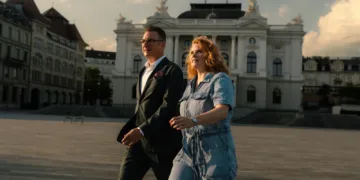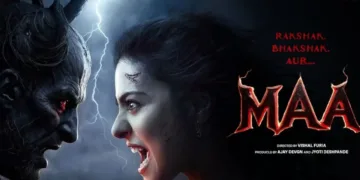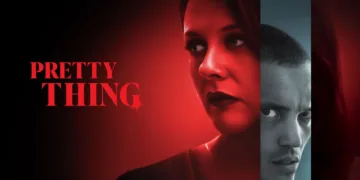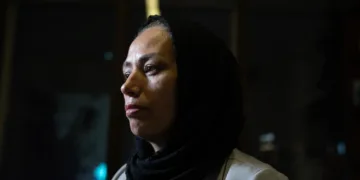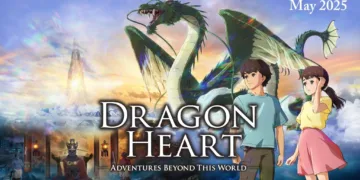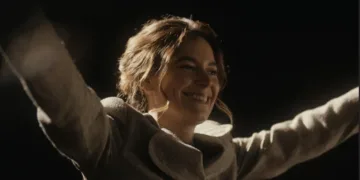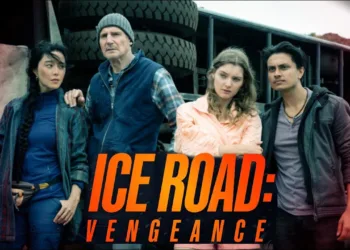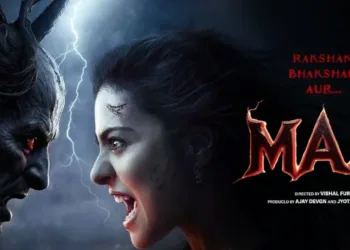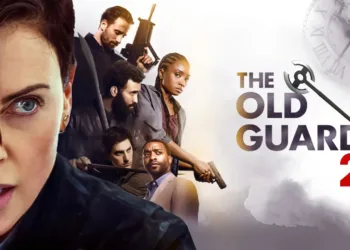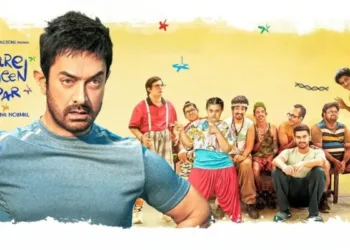Set against the urban backdrop of Copenhagen, this modern Danish romantic drama opens with a couple whose spontaneous passion quickly meets the demanding realities of conceiving a child. The film introduces a narrative that shifts from the brightness of new romance to the muted tones of personal struggle, marked by the rigors of fertility challenges.
Its title, originating from the Danish term for “hunger,” suggests a deep-seated yearning for connection, identity, and personal wholeness that extends far beyond a conventional love story. The city, with its understated elegance and secluded pockets, supplies a quiet yet potent canvas that enhances the film’s emotional landscape.
Directed and written by Ditte Hansen and Louise Mieritz, this adaptation of a Tine Høeg novel presents a focused exploration of intimate human experience. The storytelling captures both the spontaneous joy of initial attraction and the painful, methodical realities of a couple trying to expand their family.
The film’s visual narrative and carefully composed scenes reflect regional artistic traditions while inviting viewers to consider how personal and societal expectations shape modern relationships. This analysis serves as an open reflection on the interplay of passion, personal desire, and the weight of cultural expectations.
Plot Structure and Storyline Development: A Cross-Cultural Examination
The narrative introduces Mia, a successful author whose personal life brims with complexity, and Emil, a caring father in his middle years, both shaped by distinct cultural influences. Their first encounter unfolds in a manner that suggests destiny, marked by subtle cues and nuanced interactions that hint at shared vulnerabilities.
Mia’s literary success and unconventional lifestyle provide insight into the societal expectations within her cultural framework, while Emil’s background as a father offers a contrasting perspective steeped in responsibility and quiet dignity.
As the storyline advances from a casual meeting to the blossoming of a deeper connection, early scenes capture their magnetic chemistry. The film offers moments of playful banter and tender glances that echo traditional narratives of romance, yet these instances are interlaced with modern dilemmas that resonate across different cultures.
The development of their relationship is depicted through intimate settings and carefully chosen details—a quiet coffee shop conversation, a shared stroll in a historic park—that mirror the cultural aesthetics of Copenhagen while inviting a global audience to appreciate the personal stakes involved.
The narrative takes a significant turn when the couple’s ambition to expand their family becomes the central challenge. This shift brings forth the harsh realities of infertility, transforming the story from a light romantic portrayal into an exploration of medical and emotional hardships.
The film uses visual storytelling techniques, such as montage sequences of clinical settings juxtaposed with moments of personal reflection, to emphasize the relentless passage of time and the pressures imposed by societal expectations. These sequences evoke a sense of shared human experience that transcends regional boundaries.
The escalating tension is captured in scenes where repeated setbacks and moments of self-realization strain their bond. Instances of quiet arguments and reflective pauses serve as windows into their inner struggles. The narrative devices—a mix of flash-forwards and tightly edited sequences—offer a layered view of their emotional state.
The film’s pacing, which carefully interlaces the early romance with the gravity of fertility challenges, highlights the interaction between personal desire and the influence of cultural norms, leaving space for an open interpretation of how deeply personal and culturally shaped struggles intertwine.
Portraits of Love: Character Depth and On-Screen Dynamics
Mia emerges as a character defined by both her vivacious independence and the growing weight of personal expectations. As a successful author known for her edgy style, her life is a canvas for both creative expression and personal turmoil. Early scenes capture her in moments of unguarded spontaneity—laughing with friends in a sunlit café or scribbling ideas in a quiet corner—which contrast sharply with the introspection that comes with the pressure of starting a family.
Her free spirit gradually shows hints of vulnerability, especially when the pressures of a ticking biological clock begin to shape her thoughts. Moments where her eyes flicker with uncertainty, paired with a hesitant tone in her dialogue, reveal an internal struggle between her long-held independence and an emerging desire for motherhood.
Emil, in contrast, offers a measured, steady presence. As a divorced father who carries the responsibilities of raising children, his character is marked by a quiet strength and empathy. His calm demeanor and thoughtful actions—such as the soft reassurance during a difficult conversation or the gentle way he interacts with his children—provide a counterbalance to Mia’s more impulsive nature.
Their on-screen interactions often highlight this contrast; while Mia’s expressions shift rapidly from determination to doubt, Emil’s face remains composed, offering silent support that speaks volumes.
Supporting characters further enrich the narrative. Mia’s close friends provide both light-hearted banter and occasional cautionary advice, serving as a mirror to her own complexities. Meanwhile, Emil’s children contribute warmth and authenticity, their genuine affection offering small yet significant insights into his character.
The performances of the lead actors bring these intricate dynamics to life through subtle gestures and nuanced dialogue. A lingering look exchanged over a shared meal or a quiet moment in a dimly lit room hints at unspoken tensions and hidden depths, inviting the audience to consider how personal history and cultural expectations interlace to shape individual identity.
Motifs of Longing and Cultural Reflection
The film presents fertility as a powerful driver of the narrative. It examines the deep yearning to create life, revealing how the challenge of conceiving shapes the lives of its protagonists. Both characters experience a heavy burden as they face repeated disappointments; this struggle alters their emotional landscapes and impacts their day-to-day interactions. The film uses moments of quiet despair and fleeting hope to illustrate how infertility leaves its mark on personal identity.
The portrayal of modern romance reflects a mix of passionate encounters and practical considerations. The narrative juxtaposes moments of impulsive attraction with the measured routines of daily life. The characters display a tension between seeking liberation in their intimate connections and accepting the weight of responsibilities that arise with partnership and family planning. In particular, Mia’s life as an author influences her worldview; her public image stands in stark contrast to the vulnerabilities she experiences privately.
The original Danish title, which translates to “Hunger,” serves as a metaphor extending beyond the biological need for a child. This symbolic hunger represents an inner craving for recognition, self-acceptance, and fulfillment. Recurring imagery—whether in the reflective quiet of a city street or in key dialogue exchanges—reinforces this motif, urging viewers to consider the broader implications of desire and identity.
Social pressures surface in scenes that highlight the relentless ticking of the biological clock and the expectations placed on women who juggle careers with personal aspirations. Locations familiar to the region, along with repeated visual cues, create a framework that ties personal dilemmas to the larger fabric of societal norms.
These elements, woven throughout the narrative, prompt an ongoing discussion about how personal longing intersects with cultural values, leaving an open question about the balance between self-realization and societal duty.
Cinematic Techniques, Direction, and Script
Ditte Hansen and Louise Mieritz shape the film through a cooperative directorial vision that transforms a literary work into a striking visual narrative. Their adaptation captures moments of tender intimacy and stark realism by balancing straightforward storytelling with moments steeped in symbolism. The screenplay, while occasionally predictable, effectively translates the internal struggles of its characters onto the screen, inviting viewers to experience a layered exploration of personal challenges.
The film employs Copenhagen’s urban landscapes with deliberate precision. Its city scenes, bathed in natural light and framed with careful composition, contribute to a mood that is both reflective and immediate. Close-up shots capture fleeting expressions that communicate silent emotions, while lingering scenes in softly lit environments enhance the viewer’s connection to the characters’ inner lives.
Editing plays a vital role in shaping the film’s rhythm. The transitions from energetic early scenes to more reflective sequences during periods of emotional and physical strain are managed through a series of montage sequences that stitch together disparate moments into a cohesive narrative flow. Each cut, each sequence, is designed to mirror the ups and downs of the characters’ experiences.
The dialogue is marked by its memorable lines that hint at unspoken thoughts, and the sound design supports this with a musical score that adapts its tone to match shifts in mood. Elements such as voice-over excerpts from Mia’s writings are integrated seamlessly, offering insight into her internal world and reinforcing themes of desire and uncertainty.
Emotional Resonance and Reflective Echoes
The film takes viewers through an experience that combines moments of passionate hope with instances of quiet despair, forging a visceral impact that lingers. The portrayal of modern relationships is grounded in a realistic depiction of the strains imposed by social expectations and personal longings.

Moments of tenderness are interwoven with episodes of profound challenge, particularly as the difficulty of conceiving a child brings the couple’s inner conflicts into sharper focus. This emotional tapestry is presented with sensitivity, inviting audiences to witness the tension between fleeting happiness and the weight of persistent disappointment.
Mia’s character is portrayed as a figure striving to reconcile her public persona as a celebrated author with the more intricate vulnerabilities of her private life. The film captures her oscillation between a fierce independence and a quiet need for connection, especially when confronted with the realities of infertility.
Emil stands as a stabilizing presence whose measured reactions provide a counterbalance to the emotional turbulence that affects both partners. Their interactions, filled with subtle expressions and understated dialogue, contribute to a picture of love marked by both intimacy and loss.
Cultural influences are evident throughout the film, as regional histories and societal values inform the characters’ internal struggles. The narrative uses familiar urban scenes and carefully chosen visual symbols to illustrate the persistent pressure of the biological clock and the bittersweet nature of modern love. Specific sequences—a softly lit conversation in a modest apartment, a reflective pause in a bustling park—encourage viewers to ponder the meaning of personal fulfillment amid conflicting desires.
These elements open up a space for reflection on what it means to search for happiness in a world where personal aspirations meet societal demands. How might our own understandings of love and identity be reshaped when we confront such enduring challenges?
The Review
A Copenhagen Love Story
This film offers a thoughtful depiction of modern love, intertwining personal desire and cultural pressures through intimate performances and evocative visual storytelling. Its clear portrayal of infertility and evolving identities invites reflection on the contradictions of love and the weight of societal expectations. Minor narrative hesitations do little to dim its emotional impact. Verdict: a powerful, moving drama with universal appeal.
PROS
- Engaging performances and emotional depth
- Captivating cinematography and visual storytelling
- Authentic portrayal of modern relationship challenges
- Thoughtful exploration of infertility and identity
CONS
- Occasional pacing issues
- Predictable narrative moments
- Underdeveloped supporting characters



















